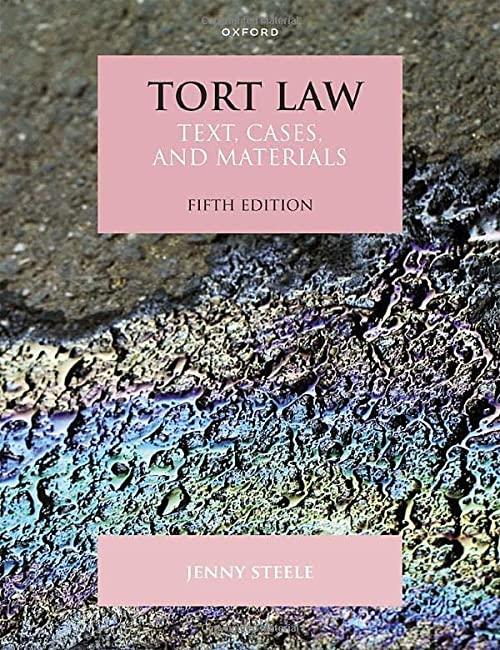Question
The Black Lives Matter movement has brought national attention to racial violence by members of law enforcement. 42 U.S.C. Section 1983 is a federal statute
The Black Lives Matter movement has brought national attention to racial violence by members of law enforcement.
42 U.S.C. Section 1983 is a federal statute that allows people to sue the government or an agent of the government for
violation of their civil rights. It provides:
"Every person who, under color of any statute, ordinance, regulation, custom, or usage, of any State or Territory or the
District of Columbia, subjects, or causes to be subjected, any citizen of the United States or other person within the
jurisdiction thereof to the deprivation of any rights, privileges, or immunities secured by the Constitution and laws,
shall be liable to the party injured in an action at law, suit in equity, or other proper proceeding for redress.
Civil actions by victims or by the estates of the victims or their families or representatives are often defeated on
summary judgment when the defendant officer asserts the affirmative defense of "qualified immunity." The court, in
Jamison v. McClendon, discussed the history of Section 1983 claims and the development of qualified immunity as a defense. In that decision, the judge explained how the defense has grown from pushback to the reconstruction
amendments of the U.S. Constitution to an arguably practical exception and then to an almost absolute bar to Section
1983 claims, which increasingly frustrates the legislative purpose of the statute and helps to contribute to one of the
greatest structural inequities of our times. What are the current considerations for a qualified immunity defense that
a court must examine?
O A. The court considers whether the facts that a plaintiff has alleged or shown make
out a violation of a constitutional right.
B. The court considers whether the right at issue was clearly established at time of the defendant's alleged misconduct.
C. The court considers whether officers should be shielded from liability if they acting in good faith,
O D. The court considers whether he law the officer broke was not "clearly established", which means that for the law to be clearly established, it must have been "beyond debate" that the officer broke the law.
O E. The court considers whether it was "beyond debate" that the officer broke the law.
F. Answers (A) and (B).
O G. Answers (C), (D), and (E).
H. Answers (A), (B), (C), (D) and (E).
I. None of the above.
Step by Step Solution
There are 3 Steps involved in it
Step: 1

Get Instant Access to Expert-Tailored Solutions
See step-by-step solutions with expert insights and AI powered tools for academic success
Step: 2

Step: 3

Ace Your Homework with AI
Get the answers you need in no time with our AI-driven, step-by-step assistance
Get Started


